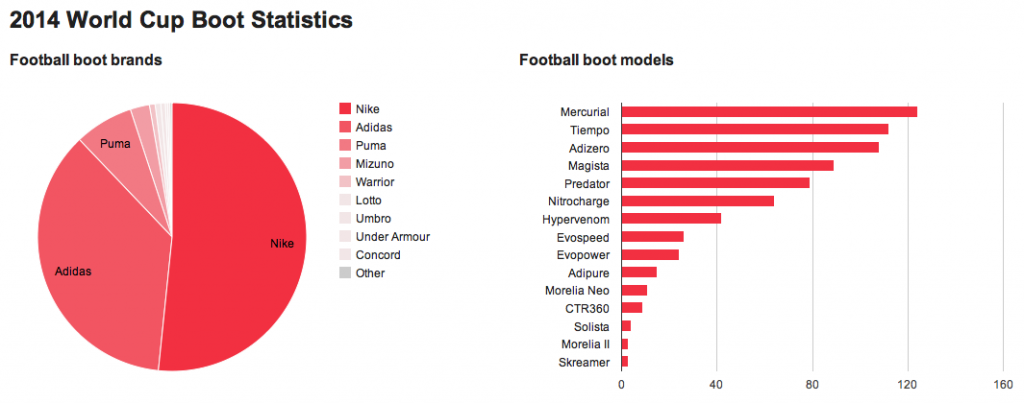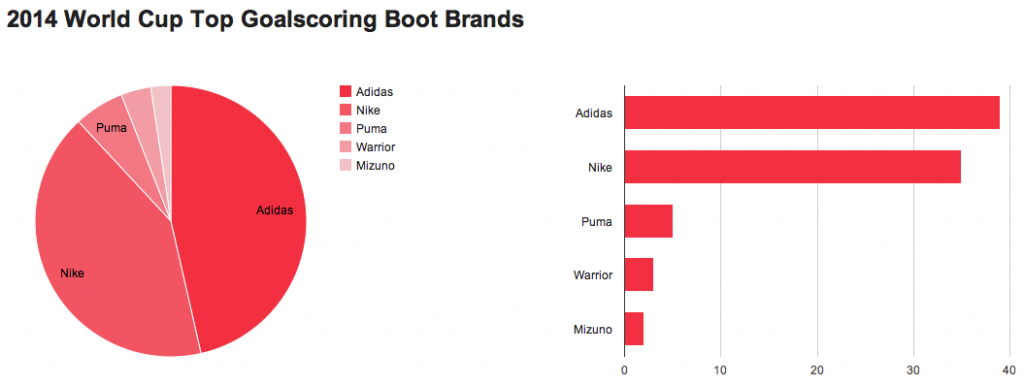179prs_I AM AN ARCHITEKT
Recent discussions here on blablablarchitecture about the empire call to mind the colonisation of the architectural profession. This is a game of architectural registration regulated by EU rules. In order to practice in the UK as an Architect (a protected word under ARB regulations) one must transfer acceptable qualifications to Britain (RIBA Parts 1-3). This transference however merely exposes the divergence between EU Member states whereby in some EU countries, TBC, an academic qualification simultaneously confers professional registration whereas in other EU countries, say Poland, one has to undertake 3y of professional experience in order to merely sit the registration examination. EU laws attempt to regulate thereby make equal but some countries are more equal than others in the registration of an Architect. Or Architekt. WHAT_architecture thus operates a performance based metric in the determination of qualification. You aren’t what you say you are, you are what you demonstrate.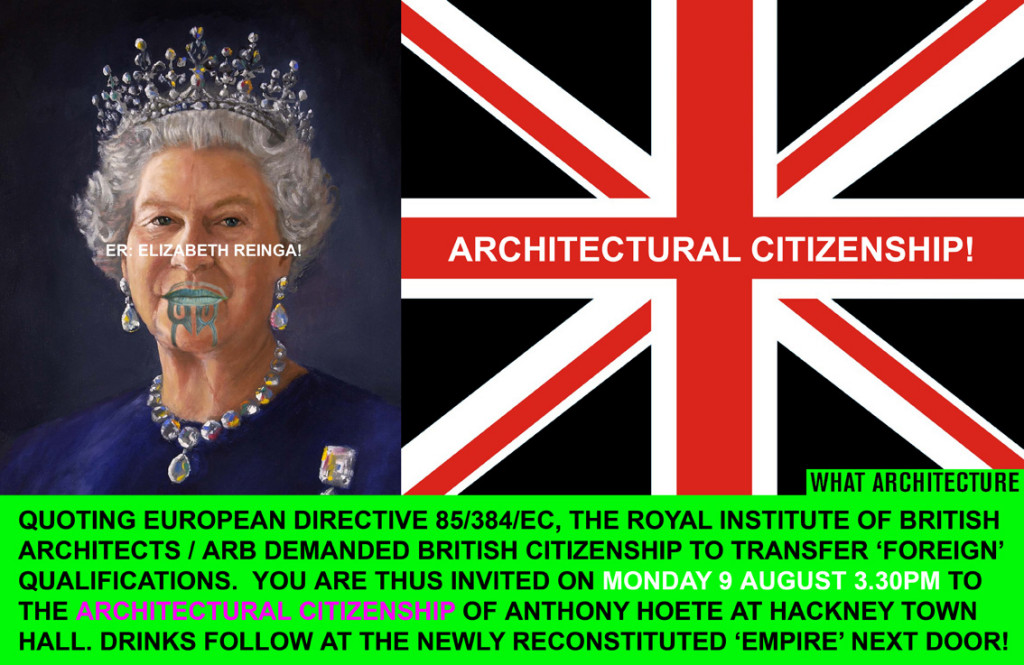
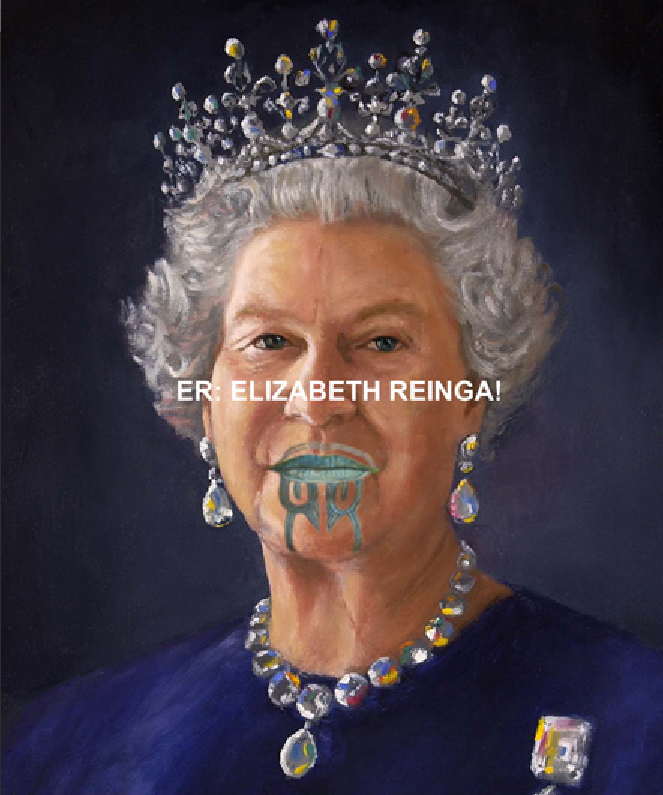



179prs_GAMITECTURE
Gamitecture. The ramification of game thinking and mechanics to architecture/. 179prs: is a practice-research project/
Gamification: is the use of game thinking and game mechanics in non-game contexts to engage users in solving problems and increase users’ self contributions. Though the term “gamification” was coined in 2002 by Nick Pelling, a British-born computer programmer and inventor, it did not gain popularity until 2010. (Wikipedia). Gamification in its narrow sense is used in a non-game context, is built into the service system, and is aiming at an infinite experience. It does not aim at creating a game but offering a gameful experience. Techniques: Gamification techniques strive to leverage WHAT_architecture’s natural abilities for:

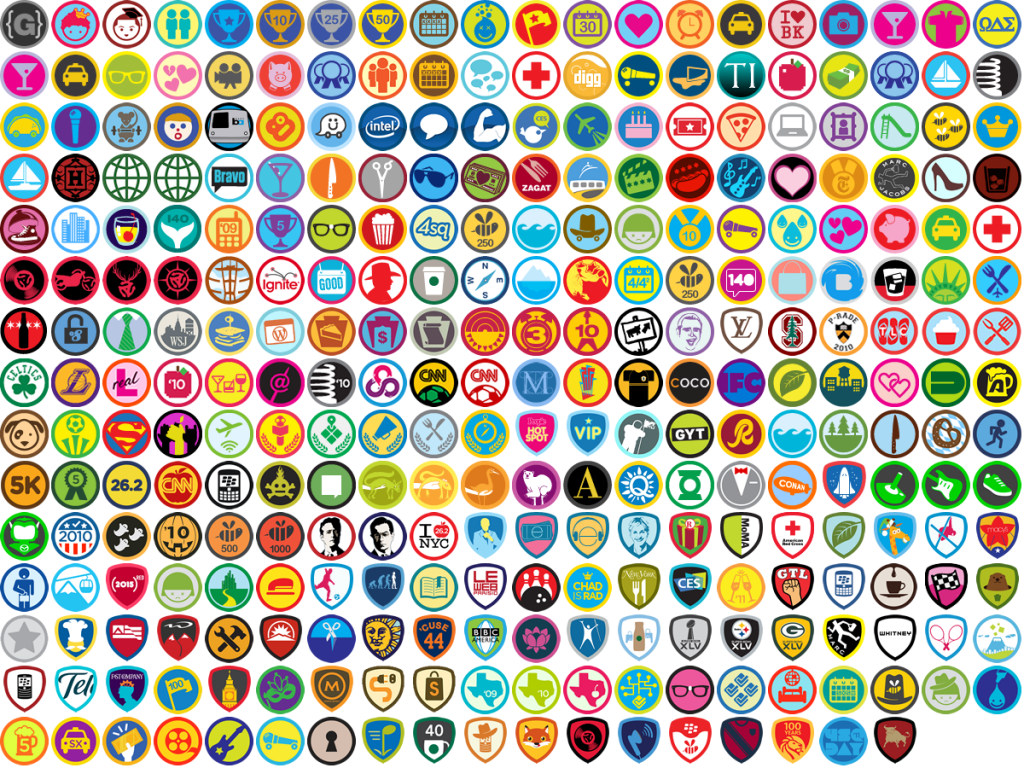
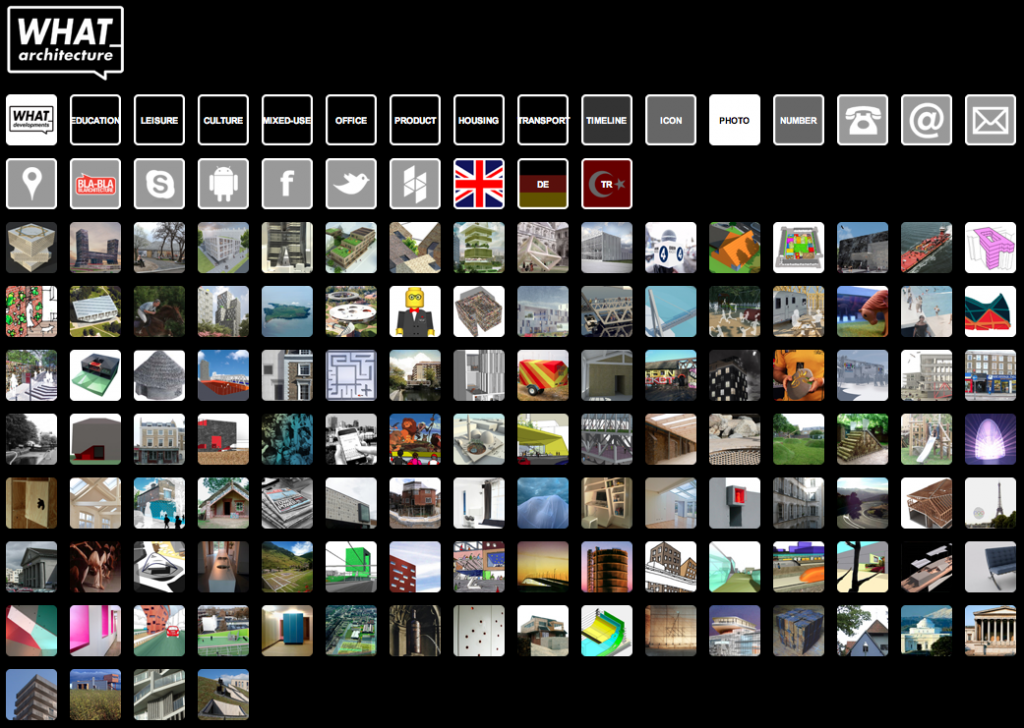
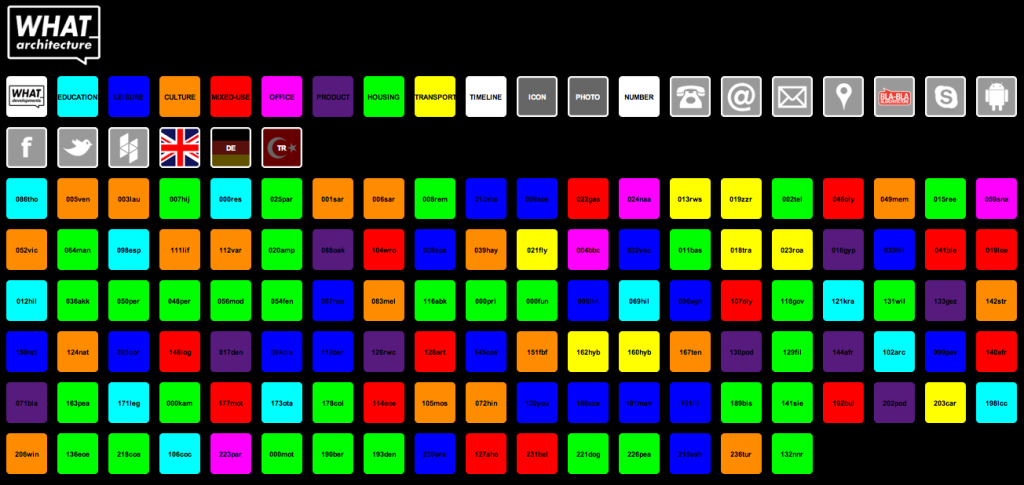
- Socialising / Fun
- Learning / Skills
- Creativity / Intelligence / Ideation…
- Team Play / Responsibility /Status / Ethics / Diligence
- Health / Finances
- Competition / Results / Performance





179prs_THE BLABLABLARCHITECTURE DICTIONARY: aka lexi-con
THE BLABLABLARCHITECTURE DICTIONARY:
This Dictionary / Lexicon is part of the vocabulary of the practice WHAT_architecture and as such represents a branch of design knowledge. These words emerged and have been coined from our everyday practice, the running of a multi-lingual intern/ational office:
ANTHONY HOETE: Editor.
1:152 SCALE: Accidentally devised by WHAT_antonio, scale 152nd raises a question about the convenience of scales of representation given that the computer can ‘scale to fit’ and we spend much of the day zooming in and out. Planning scales such as 1:1250; plan layout scale such as 1:100 and detail scales such as 1:5 seem to be residues of the scale-ruler and paper.
ARABBI: “arab or a rabbi” a politically contested field, such as that of the Arab-Jewish conflict, which provides a metanarrative for any design actions which might occur within the field.
ARCHITECTING: to practice (noun) architecture has resulted in the protection of the word ‘architect’; but to practise (verb) architecture means to privilege doing over being an architect. To facilitate architecture, WHAT_architecture suggests ‘architecting’as a unlegislated mechanism to practise Architecture//::00.
BARKITECT: 000off_The absurdity of Chiba, the office dog, as architectural critic.
BOULDERGARIA: Project 192bul_Bouldergaria is an office-leisure centre for a Bulgarian rock climbing company. Bouldergaria is a ‘climbing building’ and is part rock, part architecture. Young and old can scale, ascend, absail, traverse, claw, move and climb all over The Climbing Building. In the middle of the building is the Rock Garden, a green coutyard that provides fresh air, ligt and views to the surrounding offices. The Climbing Building is set within a man-made play landscape – the largest artificial boulder park in the world!
CPR CPD: C is for Continuing. Continuing Life: CPR. On the way to a CPD at work, I came across a morning rush hour scene: a cyclist had been hit by a vehicle… I couldn’t remember what CPR stood for (Cardiopulmonary Resuscitation) let alone remember what to do. We forget the big issues sometimes are bigger issues than we are spending our attentions on.)
DISA/POINTING: (origin Keith Knight): “Pointing is often replaced unnecessarily when the original mortar is still sound. This can result in the new mortar appearing more visually dominant that the brick or stone in the wall. Furthermore new pointing can also water evaporation passages.”
EASTENDBUL: The name of a project, 256meh, in the East End of London for a Turk-Kurdish family that originally emigrated from Istanbul.
EVI:DEFENCE: 179prs_a proposition is a defended manifesto. Evidence as defence.
FEESABIILITY: the ability of a client / project to pay fees.
FUNOLOGY: a strategy to put the fun back into functionality!
GAMETEUR: a non-professional amateur game player.
HILLDING: Landscape integrated architecture, in the example of 000hil_ the sports hall was buried in the side of the hill with its roof a grassed football field.
HOME-A-SEXUAL: a straight person leading a domestic lifestyle which could be perceived as being ‘gay’… this could be by taste / fashion, childlessness, being camp or a million other social constraints which veer away from societal idealism of conjugal bliss.
HORITAGE: (‘hor.i.tidz), n, ‘Hori’ is a transliteration of the name George into Maori and later was frequently used to designate an unknown Maori. The word is regarded as offensive. Until say the later part of the 20th Century, many aspects of Maori indignity lacked cultural recognition in mainstream NZ society e.g. architecture. The word ‘Horitage’ is my attempt to reclaim that lost time and furthermore denotes a particularly Maori understanding of conservation as distinct from that of European. For Maori, heritage is alive; for European, heritage is more akin to preservation: artefacts cryogenically frozen in time, arranged and displayed in wunderkabinets. Maori culture decolonizes conservation. This is Horitage: see 072hin_
INTERN/ATIONAL: the WHAT_architecture ‘flat business model’ is similar to the tech-start companies which also share its ‘silicon roundabout’ location.
INTERNOMICS: WHAT_architecture financial survival through empowering emerging students.
KA PAI CHART: refer 072hin_ when survey results engineer a good result.
KIWIMUNITY: the diaspora. refer 072hin_
MAORITIME:Derived from the idea of a Maori martime tradition of which canoes (waka ) which are embedded in my geneology and identity,. My canoe / waka is Mataatua. Maori Maritime horitage means waka today are still put in the water and used unlike British Maritime heritage which puts boats such as the Cutty Sark in dry docks, cryogenically freezing them.
MIMARLIMAK: Turkish for the emerging English verb: Architecting. Refer 181man_ managé near the Black Sea and 105mos_ mosque in Istanbul.
MINI-SKIRTING: Reductive approach to floor versus wall moldings often with the Modernist ambition to decrease decoration through abstraction.
MOST-PODERNISM: Refer 129fil_programming an existing industrial historic space with dissolved modernist domestic elements – manifest as three pods. Each pod houses private events – sleeping, washing – whilst the external spaces outside the pod houses the public events of domesticity – cooking, dining, lounging so as to maximise living opportunities.
OSTRICHSISED: an amalgam of ‘ostrich’ and ‘ostracised’whereby one’s ‘head-in-the-sand behaviour results in their expulsion from the community to which they, perhaps unknowingly, belong. In my interviewing experience, the Architect often demonstrates such behaviour when asked about the influence of his or her contemporaries on their work. Since design has aspirations of innovation and being ‘avant grade’ one has to be first: in this sense lead rather than follow and thus many architects prefer to quote references from another epoch than begrudgingly acknowledge their contemporaries.
PICNICKNAME: 186cze_in recognition of a critical mass of social / informal use which rsults in the renaming of a building: REFER those who picnic on the stairs landings of the RFH = ‘people’s palace’
PHACIAL: 000off_WHAT_architecture players pay office portraiture homage to former 10CC members Godley and Creme’s Cry…’phacial’ (photoshop facials) morphed by Stefanos (who photoshops well).
100% PUERILE: ‘100% puerile’ is my response to the New Zealand Government’s tourism campaign – ‘100% pure’ – which seeks to reinforce the anachronistic colonialist view of NZ as paradise (no snakes even!). Be wary of what you wish for: cleanliness and purity are masks of the underworld such as Swiss cash mountain’s built on financial disclosure.
SALAKITEKTURE: from the Turkish: a seemingly bizarre architecture which might be in fact meaningful.
STADTIUM: 186cze_stadium integrated into its city context
SUPERVIBER: (Martyn Hook) Someone who supervisers using Viber. Meaning they are a long way from what’s going on. Think overview vs details, communication clarity.
URBANISTIC: 186cze_in the style of being urban without actually being urban
VeNZia! The name of the project 253ven_ and aqword play on Venezia and NZ. Venezia (Venice) was where coffee was reputedly introduced into European and NZ has since added design value to coffee through the ‘flat white’, enhancing the barista and bean roasting culture.
YALLABUY: An Arab-London real estate slang from the Anglo-Arab slang YallaBye

179prs_DOCTORAL RESEARCH GAME TITLE!?
Forthcoming titles in 2015!
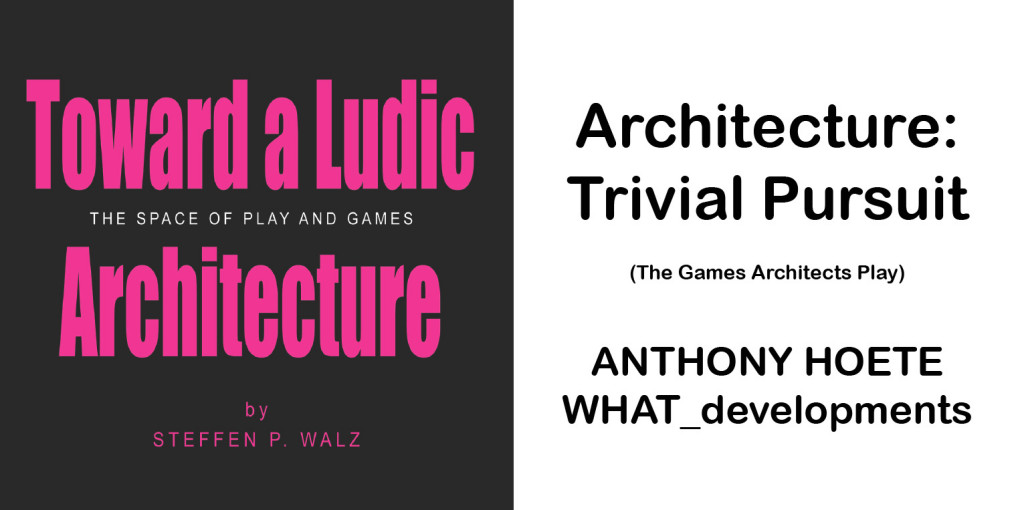 GAMEPLAY!
The object of the game is to move around the board by correctly answering trivia questions. Questions are split into six categories, with each one having its own color to readily identify itself; in the classic version of Trivial Pursuit, the Genus edition, these are Geography (blue), Entertainment (pink), History (yellow), Arts & Literature (brown), Science & Nature (green), and Sports & Leisure (orange). The game includes a board, playing pieces, question cards, a box, small plastic wedges to fit into the playing pieces, and a die.
Playing pieces used in Trivial Pursuit are round and divided into six sections, similar to a pie. A small, plastic wedge can be placed into each of these sections to mark each player’s progress.
During the game, players move their playing pieces around a track which is shaped like a wheel with six spokes. This track is divided into spaces of different colors, and the center of the board is a hexagonal “hub” space. At the end of each spoke is a “category headquarters” space. When a player’s counter lands on a square, the player answers a question according to the color of the square, which corresponds to one of the six categories. If the player answers the question correctly, their turn continues; if the player’s piece was on one of the category headquarters spaces, he/she collect a wedge of the same color, which fits into the playing piece. Some spaces say “roll again,” giving an extra roll of the die to the player. The hub is a “wild” space; a player landing here may answer a question in the category of his/her choice. Any number of playing pieces may occupy the same space at the same time. A variant rule ends a player’s turn on collecting a wedge, preventing a single knowledgeable player from running the board.
Once a player has collected one wedge of each color and filled up his/her playing piece, he or she must return to the hub and answer a question in a category selected by the other players. If this question is answered correctly, that player wins the game. Otherwise, the player must leave the center of the board and try again on the next turn.
GAMEPLAY!
The object of the game is to move around the board by correctly answering trivia questions. Questions are split into six categories, with each one having its own color to readily identify itself; in the classic version of Trivial Pursuit, the Genus edition, these are Geography (blue), Entertainment (pink), History (yellow), Arts & Literature (brown), Science & Nature (green), and Sports & Leisure (orange). The game includes a board, playing pieces, question cards, a box, small plastic wedges to fit into the playing pieces, and a die.
Playing pieces used in Trivial Pursuit are round and divided into six sections, similar to a pie. A small, plastic wedge can be placed into each of these sections to mark each player’s progress.
During the game, players move their playing pieces around a track which is shaped like a wheel with six spokes. This track is divided into spaces of different colors, and the center of the board is a hexagonal “hub” space. At the end of each spoke is a “category headquarters” space. When a player’s counter lands on a square, the player answers a question according to the color of the square, which corresponds to one of the six categories. If the player answers the question correctly, their turn continues; if the player’s piece was on one of the category headquarters spaces, he/she collect a wedge of the same color, which fits into the playing piece. Some spaces say “roll again,” giving an extra roll of the die to the player. The hub is a “wild” space; a player landing here may answer a question in the category of his/her choice. Any number of playing pieces may occupy the same space at the same time. A variant rule ends a player’s turn on collecting a wedge, preventing a single knowledgeable player from running the board.
Once a player has collected one wedge of each color and filled up his/her playing piece, he or she must return to the hub and answer a question in a category selected by the other players. If this question is answered correctly, that player wins the game. Otherwise, the player must leave the center of the board and try again on the next turn.
 GAMEPLAY!
The object of the game is to move around the board by correctly answering trivia questions. Questions are split into six categories, with each one having its own color to readily identify itself; in the classic version of Trivial Pursuit, the Genus edition, these are Geography (blue), Entertainment (pink), History (yellow), Arts & Literature (brown), Science & Nature (green), and Sports & Leisure (orange). The game includes a board, playing pieces, question cards, a box, small plastic wedges to fit into the playing pieces, and a die.
Playing pieces used in Trivial Pursuit are round and divided into six sections, similar to a pie. A small, plastic wedge can be placed into each of these sections to mark each player’s progress.
During the game, players move their playing pieces around a track which is shaped like a wheel with six spokes. This track is divided into spaces of different colors, and the center of the board is a hexagonal “hub” space. At the end of each spoke is a “category headquarters” space. When a player’s counter lands on a square, the player answers a question according to the color of the square, which corresponds to one of the six categories. If the player answers the question correctly, their turn continues; if the player’s piece was on one of the category headquarters spaces, he/she collect a wedge of the same color, which fits into the playing piece. Some spaces say “roll again,” giving an extra roll of the die to the player. The hub is a “wild” space; a player landing here may answer a question in the category of his/her choice. Any number of playing pieces may occupy the same space at the same time. A variant rule ends a player’s turn on collecting a wedge, preventing a single knowledgeable player from running the board.
Once a player has collected one wedge of each color and filled up his/her playing piece, he or she must return to the hub and answer a question in a category selected by the other players. If this question is answered correctly, that player wins the game. Otherwise, the player must leave the center of the board and try again on the next turn.
GAMEPLAY!
The object of the game is to move around the board by correctly answering trivia questions. Questions are split into six categories, with each one having its own color to readily identify itself; in the classic version of Trivial Pursuit, the Genus edition, these are Geography (blue), Entertainment (pink), History (yellow), Arts & Literature (brown), Science & Nature (green), and Sports & Leisure (orange). The game includes a board, playing pieces, question cards, a box, small plastic wedges to fit into the playing pieces, and a die.
Playing pieces used in Trivial Pursuit are round and divided into six sections, similar to a pie. A small, plastic wedge can be placed into each of these sections to mark each player’s progress.
During the game, players move their playing pieces around a track which is shaped like a wheel with six spokes. This track is divided into spaces of different colors, and the center of the board is a hexagonal “hub” space. At the end of each spoke is a “category headquarters” space. When a player’s counter lands on a square, the player answers a question according to the color of the square, which corresponds to one of the six categories. If the player answers the question correctly, their turn continues; if the player’s piece was on one of the category headquarters spaces, he/she collect a wedge of the same color, which fits into the playing piece. Some spaces say “roll again,” giving an extra roll of the die to the player. The hub is a “wild” space; a player landing here may answer a question in the category of his/her choice. Any number of playing pieces may occupy the same space at the same time. A variant rule ends a player’s turn on collecting a wedge, preventing a single knowledgeable player from running the board.
Once a player has collected one wedge of each color and filled up his/her playing piece, he or she must return to the hub and answer a question in a category selected by the other players. If this question is answered correctly, that player wins the game. Otherwise, the player must leave the center of the board and try again on the next turn.

000off_DON’T BUY, BORROW? BEST IS LESS? YOU’LL NEVER NOT WORK A LOAN!
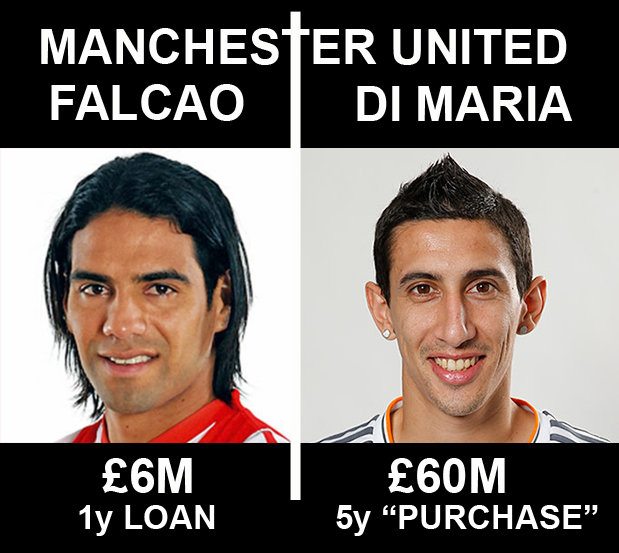 WHAT_architecture believes, thanks to the practice-based research being undertaken with the RMiT, it has developed a management model that operates less like an architectural practice and more like a football club. It’s one of player rotation, controlled injury-free deadlines and performance based metrics where the goal comes not from client patrimony but self-build projects. This requires a lot of movement: practice makes perfect! This week included one Transfer Deadline Day: 1st September. This is a football term representing a “transfer window, the period during the year in which a football club can transfer players from other countries into their playing staff'”according to Wiki. In 2014, the biggest news of TDD / the transfer window was the transfer of Radamel Falcao from Monaco to Manchester United. For £6m. Now £6m is a lot of money. In architecture, £6m will buy you the built 127sho_Shoreditch Station which would consist of 7 flats and 4 commercial spaces in the heart of Shoreditch. With Ace finishing, this represents a fantastic project. In footballing terms, £6m will buy you a 2-bedroom-East-London-flat type-of-player: sexy, promising but a long way from the end game. Manchester also paid in the transfer window £60M for Angel Di Maria. Okay so Falcao was a Loan (from Monaco) and Di Maria was a Purchase (from Madrid). Nonetheless the purchase needs to out-perform the loan 10x to qualify the expenditure. In architecture if the annual rent paid for anything (a flat, an office, a car? Well let’s see) was just 1/6 of the purchase we would never rent, but always seek to buy. This undoubtedly priorities lending. In football, a loan player apparently has less value (culturally, commercially) than a bought player>>> Unedited / memo TBC…. 8:{])
WHAT_architecture believes, thanks to the practice-based research being undertaken with the RMiT, it has developed a management model that operates less like an architectural practice and more like a football club. It’s one of player rotation, controlled injury-free deadlines and performance based metrics where the goal comes not from client patrimony but self-build projects. This requires a lot of movement: practice makes perfect! This week included one Transfer Deadline Day: 1st September. This is a football term representing a “transfer window, the period during the year in which a football club can transfer players from other countries into their playing staff'”according to Wiki. In 2014, the biggest news of TDD / the transfer window was the transfer of Radamel Falcao from Monaco to Manchester United. For £6m. Now £6m is a lot of money. In architecture, £6m will buy you the built 127sho_Shoreditch Station which would consist of 7 flats and 4 commercial spaces in the heart of Shoreditch. With Ace finishing, this represents a fantastic project. In footballing terms, £6m will buy you a 2-bedroom-East-London-flat type-of-player: sexy, promising but a long way from the end game. Manchester also paid in the transfer window £60M for Angel Di Maria. Okay so Falcao was a Loan (from Monaco) and Di Maria was a Purchase (from Madrid). Nonetheless the purchase needs to out-perform the loan 10x to qualify the expenditure. In architecture if the annual rent paid for anything (a flat, an office, a car? Well let’s see) was just 1/6 of the purchase we would never rent, but always seek to buy. This undoubtedly priorities lending. In football, a loan player apparently has less value (culturally, commercially) than a bought player>>> Unedited / memo TBC…. 8:{])
179prs_Weltmeisterschaft Wohnzimmer
German mid-field dominance continues with the conversion of FC Union Berlin’s stadium into a gigantic living room.
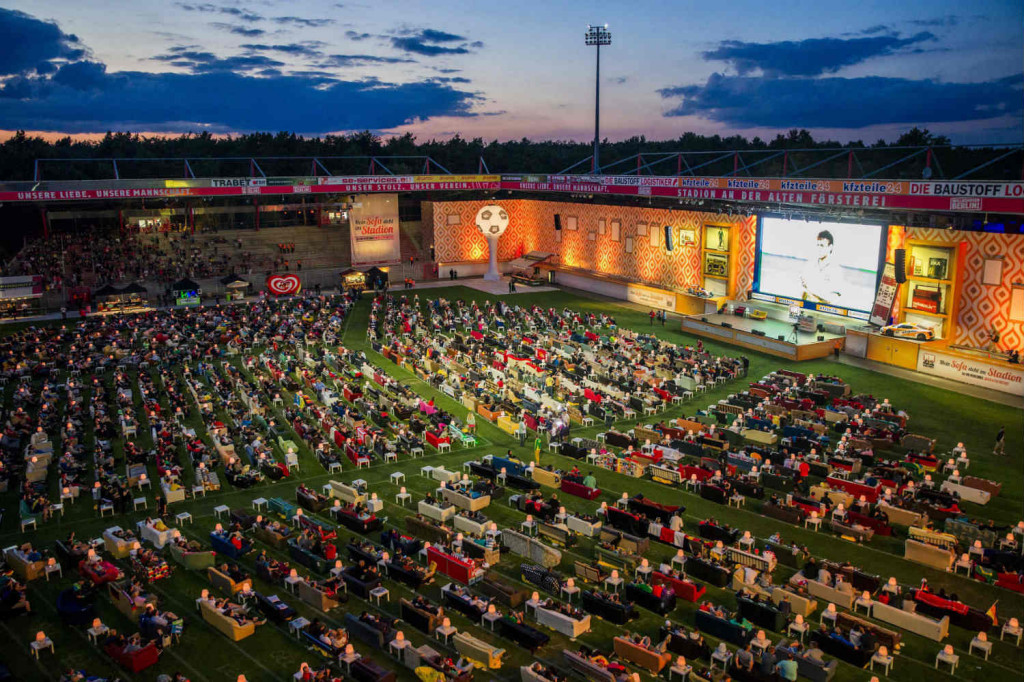
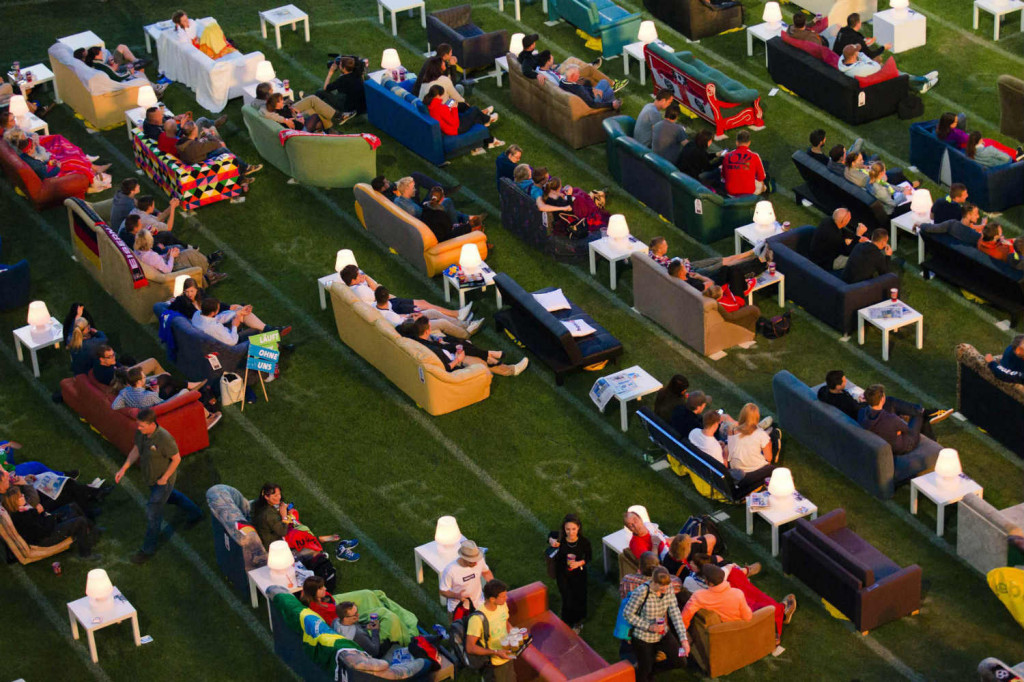
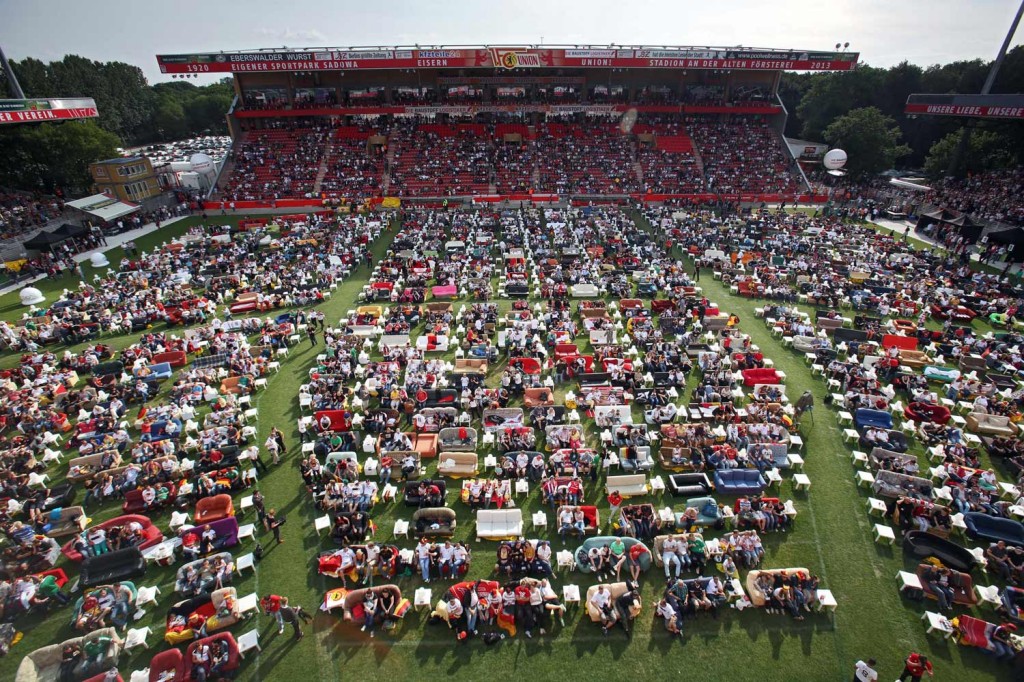




179prs_PITCH: OFFICE RECONFIGURATION
The reconfigurable office:
vs project team (players): WORK MODE 1
vs CPD lecture / project review (formal play): WORK MODE 2
vs Lunch time / office drinks (informal play): PLAY MODE 1
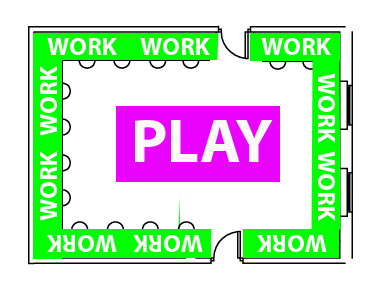
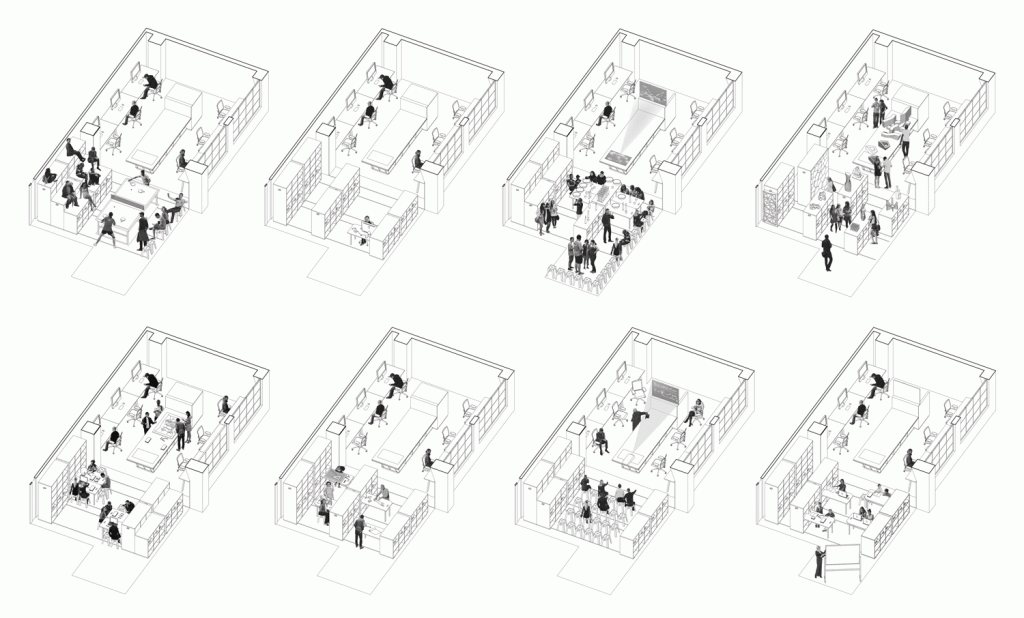 We are not alone: Particular Architects build themselves a reconfigurable studio
We are not alone: Particular Architects build themselves a reconfigurable studio

 We are not alone: Particular Architects build themselves a reconfigurable studio
We are not alone: Particular Architects build themselves a reconfigurable studio
179prs_WHAT_architecture IS CHOICE ARCHITECTURE
WHAT_architecture absorbs the social, economic and ecologic dynamics of a project and frames them as an acute choice. What do you want? What kind of player are you: client, user, occupant, tenant, landlord, politician or architect? WHAT_architecture is an acute choice architecture.

179prs_ARCHITECT AS PLAYER
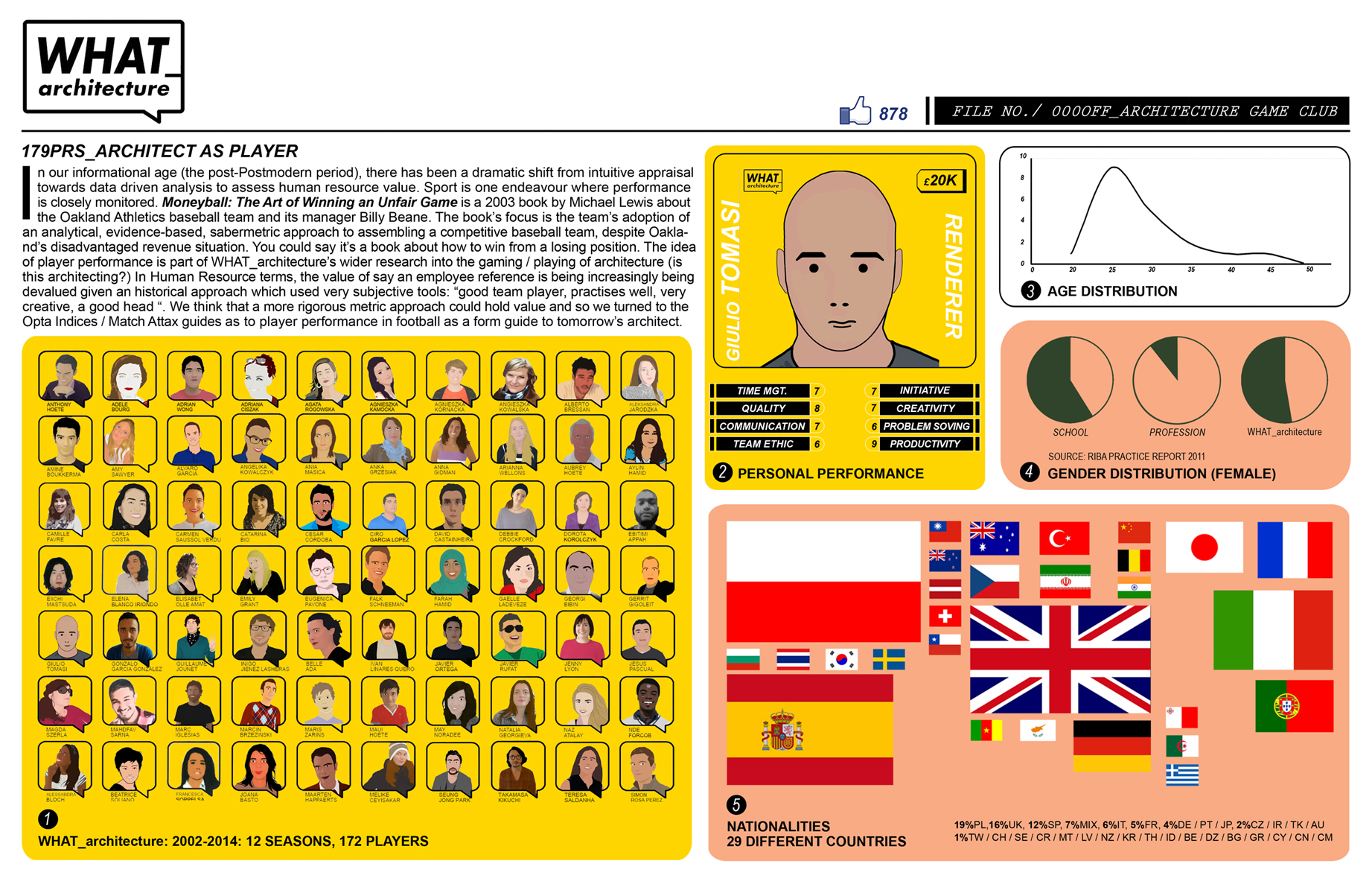 TBC: Client as player, architect as spectator. We accept that good architecture requires good clients. So what are the performance criteria for clients? Ambition? Decisive decision making or dawdling (possession or execution)? Framework agreements? Portfolio vs workability? Handshakers vs goalscorers? Big budgets? PQQ vs IQ? Introduce Agnieszka Londynska (CV, optimised performance)
TBC: Client as player, architect as spectator. We accept that good architecture requires good clients. So what are the performance criteria for clients? Ambition? Decisive decision making or dawdling (possession or execution)? Framework agreements? Portfolio vs workability? Handshakers vs goalscorers? Big budgets? PQQ vs IQ? Introduce Agnieszka Londynska (CV, optimised performance)
